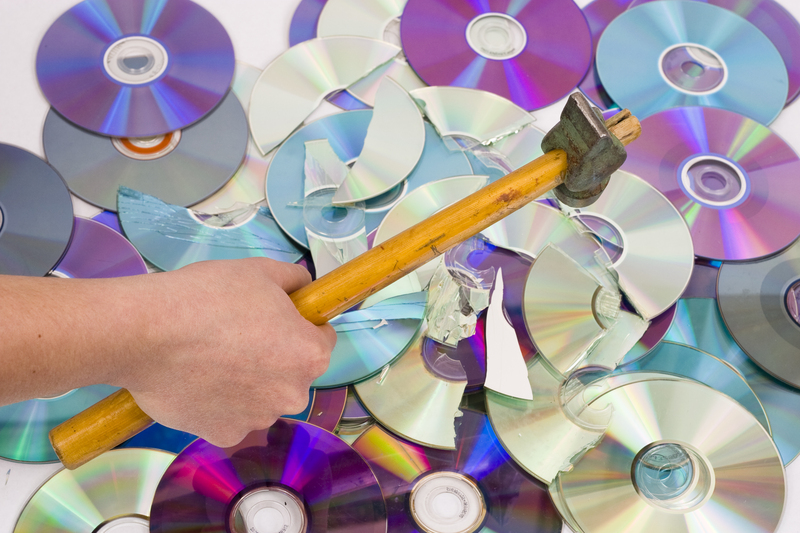How to Prevent Pollution When Disposing of PPE Waste
As personal protective equipment (PPE) usage has skyrocketed globally due to health crises and industrial expansion, proper disposal of PPE waste has become increasingly critical. Incorrect handling could lead to serious environmental pollution and health hazards. In this comprehensive guide, we will explore how to prevent pollution when disposing of PPE waste through sustainable, safe, and effective practices.
Understanding PPE Waste and Its Environmental Impact
PPE (Personal Protective Equipment) typically includes items such as masks, gloves, gowns, face shields, and safety glasses. Most of these items are designed for single use and composed of materials like plastics, rubber, and synthetic fibers. When improperly disposed of, PPE can contribute to:
- Soil and water contamination due to microplastic leaching
- Marine pollution harming aquatic life
- Spread of infectious diseases through contaminated waste
- Air pollution from incineration without emission controls
According to recent reports, millions of tons of single-use PPE items have been dumped globally since 2020, with a significant proportion ending up in landfills and oceans.

Why Proper PPE Waste Management is Necessary
Managing PPE waste correctly prevents dangerous pollution, protects public health, and aligns with environmental sustainability goals. Here are key reasons:
- Prevents Livelihood Risks - Improper PPE disposal can transmit infectious diseases to sanitation workers and the general public.
- Reduces Environmental Load - Proper segregation and treatment mitigate long-term environmental risks such as microplastic release.
- Supports Circular Economy - With the right solutions, PPE waste can be recycled or safely incinerated for energy recovery.
Step-By-Step Guidelines: How to Prevent Pollution When Disposing of PPE Waste
1. Segregate PPE Waste at the Source
The first and most important step is the segregation of PPE waste from other types of waste. Dedicated bins labeled specifically for PPE should be used in hospitals, offices, factories, and households. This prevents contamination and makes the next steps more efficient.
- Use color-coded bins (e.g., red or yellow) for PPE waste
- Educate staff and families on what qualifies as PPE waste
- Keep bins covered to avoid accidental contact or spillage
2. Properly Bag and Seal PPE Waste
It is essential that PPE items such as used face masks, gloves, and aprons are placed in strong, leak-proof bags. Double-bagging is recommended, especially for waste from medical or quarantine facilities.
- Use thick, preferably biodegradable bags
- Seal bags tight; do not overfill
- Label bags as "contaminated PPE waste"
3. Safe PPE Waste Collection and Storage
Collection timing and storage conditions are crucial to preventing pollution and avoiding health risks. Collection staff should be equipped with their own protective gear when handling PPE waste.
- Store PPE waste in a secure, designated location away from regular trash
- Do not leave bags outside where animals or weather can cause spread
- Arrange for frequent collection to prevent accumulation
4. Transportation by Certified Personnel
To minimize risks, ensure PPE waste is transported by trained and authorized waste management personnel using vehicles designed for medical or hazardous waste.
- Drivers and handlers should wear appropriate PPE
- Vehicles must be sanitized regularly
- Documentation for every collection and drop-off is essential
5. Proper PPE Waste Treatment Methods
The treatment of PPE waste is pivotal in reducing pollution. There are several environmentally responsible options:
- Autoclaving - Using high-pressure steam to disinfect; reduces biological risks before landfill disposal or recycling.
- Incineration - Effective for contaminated PPE, but should be carried out in high-efficiency, emission-controlled incinerators to prevent air pollution.
- Recycling - Some non-contaminated plastics can be recycled; new methods allow for decontamination and reprocessing into usable materials.
- Chemical disinfectants - Can be used to sterilize PPE waste prior to disposal, limiting further biological contamination.
Choose a method based on the type and contamination level of PPE waste, as well as local regulations and infrastructure.
6. Avoid Littering and Illegal Dumping
Improperly discarded PPE items in public spaces contribute to pollution, blocking drainage systems, affecting wildlife, and posing risks to cleaners. Always ensure PPE waste is handed over to authorized collectors or disposed of at designated facilities.
- Never flush PPE down toilets or drains
- Discourage littering through signage and awareness programs
- Report illegal dumping to authorities
Best Practices to Prevent Pollution from PPE Waste
Educate Communities and Staff
Knowledge is power. Conduct regular awareness campaigns for households, workplaces, industries, and healthcare institutions about the environmental consequences of PPE waste.
- Train staff in safe PPE waste handling and disposal
- Distribute clear instructions via posters and leaflets
- Involve local authorities and NGOs in community outreach
Promote the Use of Reusable PPE Where Possible
Opting for reusable masks, gloves, and shields can significantly reduce the volume of PPE waste generated, provided cleaning and disinfection protocols are rigidly followed.
- Favor cloth masks and heavy-duty reusable gloves for non-medical settings
- Sterilize reusable items according to guidelines
Support Innovation in Sustainable PPE
The market is seeing growth in biodegradable and compostable PPE. Encourage suppliers and policymakers to adopt sustainable PPE alternatives that are easier to dispose of without causing pollution.
- Choose products certified as biodegradable or compostable
- Work with manufacturers on eco-friendly PPE development
Collaborate with Certified Waste Management Services
Established waste management companies follow strict protocols for the disposal of hazardous and medical waste. Partnering with such services ensures that your PPE waste does not harm the environment.
- Check for appropriate licenses and compliance certificates
- Maintain clear records for accountability
Legal Regulations for PPE Waste Disposal
Laws and guidelines for PPE waste disposal vary by country and industry. Failing to comply can result in penalties and environmental harm.
Some Examples of PPE Waste Disposal Regulations:
- World Health Organization (WHO) advises separate bins and regular collection for PPE in healthcare settings.
- Environmental Protection Agency (EPA) in the US - Medical and infectious waste (including PPE) must be treated before landfill and must not be mixed with municipal waste.
- European Union Waste Framework Directive sets out rules for hazardous healthcare waste, including PPE.
It is essential to stay updated with your local environmental agency's latest guidance on proper PPE waste management protocols.
Innovative Technologies in PPE Waste Recycling
As the PPE waste crisis mounts, researchers and businesses are developing new methods to recycle PPE waste safely and efficiently:
- Mechanical Recycling: Some facilities can shred and wash uncontaminated PPE plastics to form pellets for use in manufacturing.
- Chemical Recycling: Advanced technologies can break down PPE to basic chemicals for new products, minimizing environmental load.
- Pyrolysis: This technique converts PPE waste to fuel or new plastics under controlled conditions.
- Research on Biodegradable PPE: Startups are developing masks and gloves from natural materials such as bamboo and cornstarch, which decompose without polluting the environment.
Adoption of these technologies, combined with responsible consumption, can drastically reduce the burden of PPE waste on our planet.
Tips for Households: Disposing of PPE Waste Sustainably
Every individual can contribute to environmentally safe PPE waste disposal:
- Designate a separate bin at home for used masks, gloves, and tissues.
- Ensure items are bagged and sealed before being put out for collection.
- Do not mix PPE with recyclables such as cans, bottles, or paper.
- Never litter PPE in public places, parks, or natural areas.
- Follow local waste disposal notices and updates diligently.
Tips for Businesses and Healthcare Facilities
- Provide visible PPE waste bins across premises.
- Implement routine training for all staff regarding PPE disposal protocols.
- Contract licensed hazardous waste handlers for regular and safe collection.
- Conduct periodic audits to ensure compliance with standards and regulations.
- Stay updated with evolving regulatory requirements regarding PPE waste.
Summary: Your Role in Preventing Pollution When Disposing of PPE Waste
Preventing pollution from PPE waste is not only a regulatory requirement but a moral responsibility for individuals, businesses, and governments. With increased awareness, proper segregation, safe collection, and adoption of innovative treatment and recycling technologies, we can collectively minimize the impact of PPE on the environment.
- Follow safe PPE disposal practices at all levels
- Promote reusable or biodegradable alternatives
- Support local authorities and environmental organizations in their efforts
By making sustainable choices and spreading awareness on how to prevent pollution when disposing of PPE waste, you are safeguarding the planet for future generations.

Frequently Asked Questions (FAQs) on PPE Waste Disposal
Can PPE waste be recycled?
Some PPE items can be recycled if they are not heavily contaminated. However, specialized facilities are needed for decontamination and reprocessing. Check local guidelines and always dispose of contaminated PPE in designated hazardous waste bins.
Is burning PPE waste safe?
Incinerating PPE waste in emission-controlled facilities is effective for eradicating pathogens but can cause air pollution if not managed properly. Open burning should be strictly prohibited.
What are biodegradable options for PPE?
There are *biodegradable PPE products* available, such as masks and gloves made from cornstarch, bamboo, or cellulose. These options help reduce landfill and ocean pollution.
How can I encourage others to dispose of PPE responsibly?
Lead by example, share information, and organize community clean-ups. Support policies and businesses that prioritize sustainable PPE production and disposal.
Conclusion
How to prevent pollution when disposing of PPE waste is a challenge of our time, but with informed action and responsible habits, it is possible to protect both people and the planet. By following the tips and best practices outlined in this article, you can make a significant impact in your community and contribute to a cleaner, safer world.
For more information and updates on best practices for PPE waste management, consult your local health and environmental authorities.
